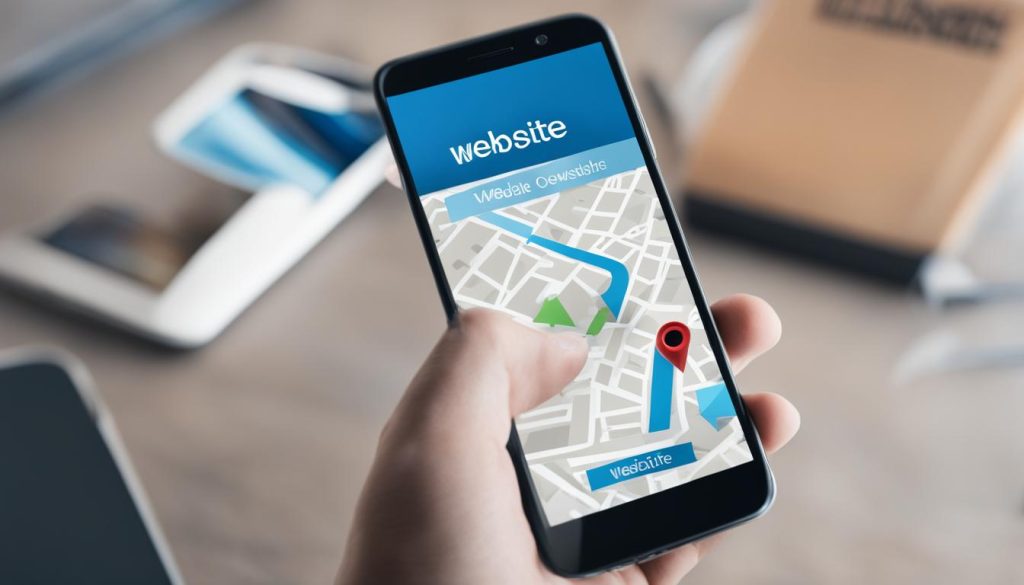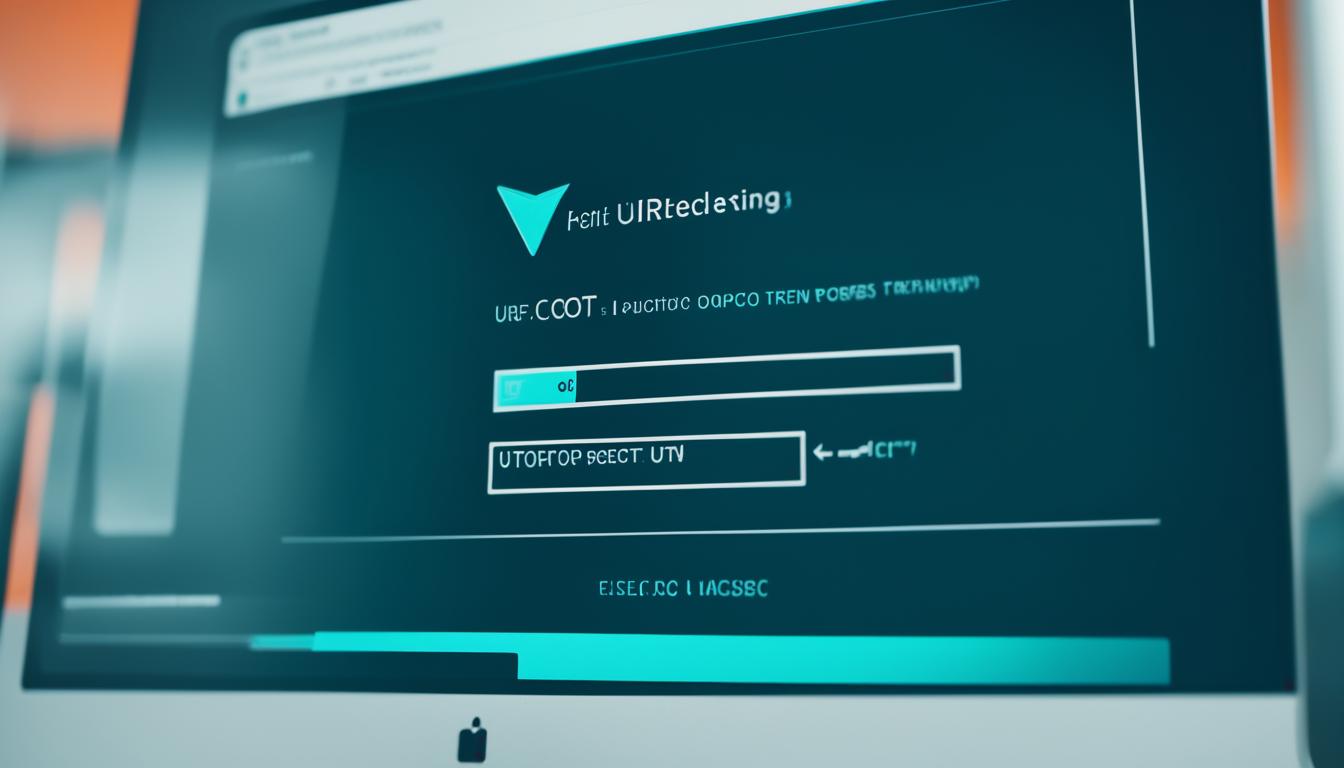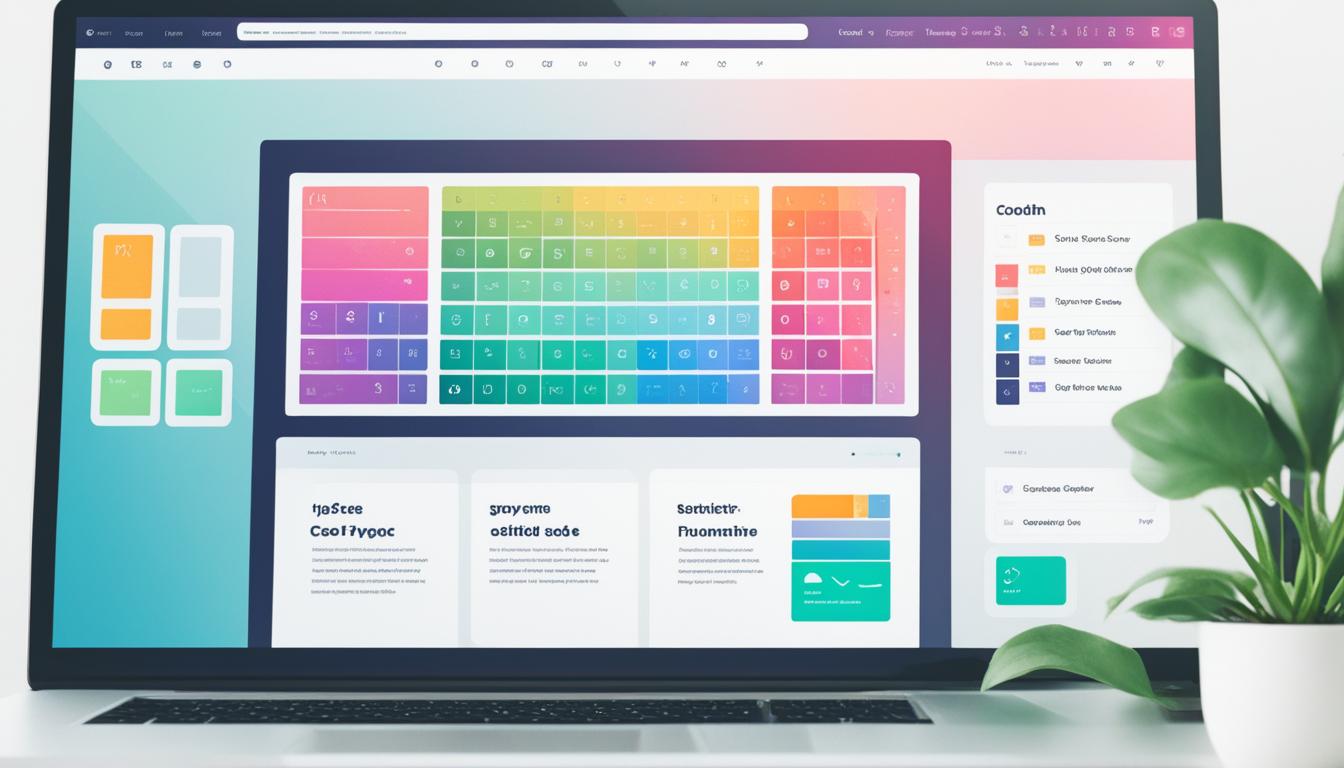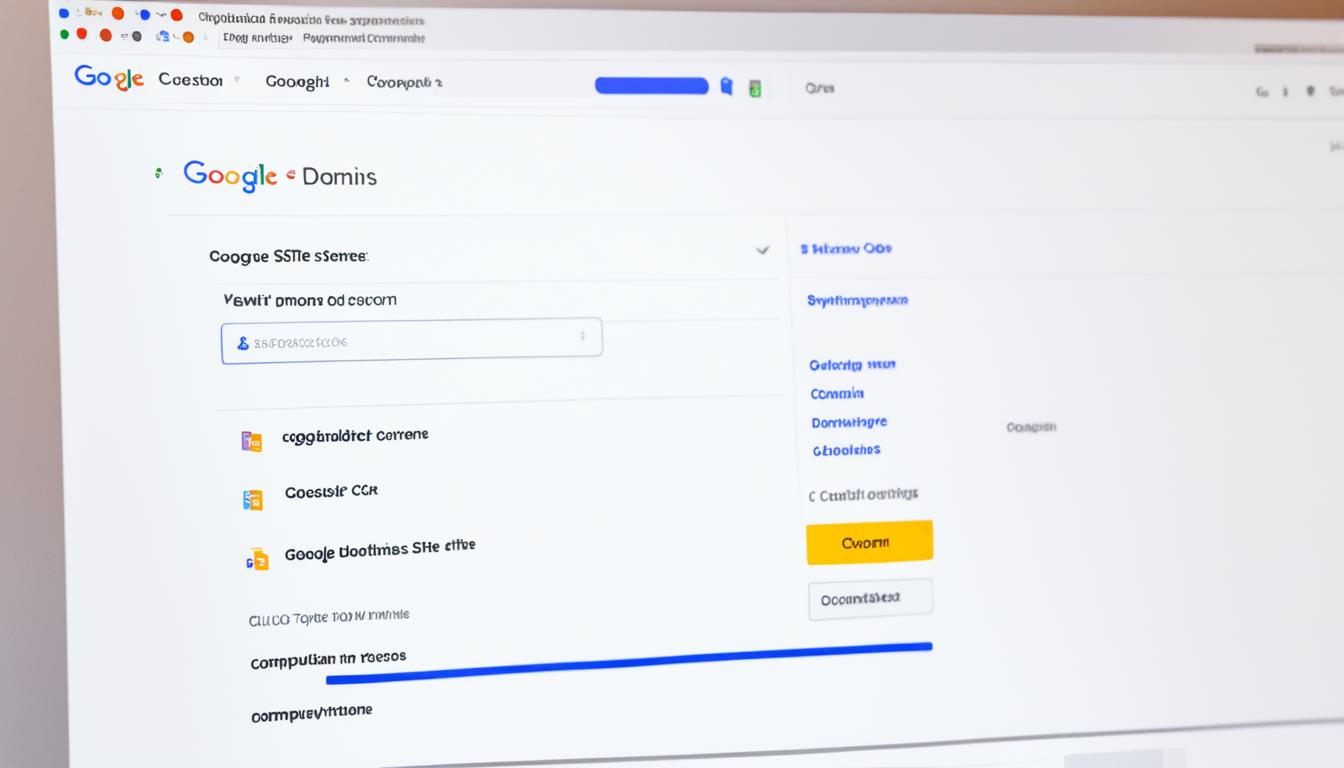At a Website or On a Website? Which is correct?
Did you know that using the right preposition when talking about websites can greatly impact your grammar and SEO? Many people mistakenly use the preposition “at” when referring to a website, but the correct usage is actually “on”. This small grammatical detail can make a big difference in how your website is perceived and understood by readers. Let’s dive into the proper usage of prepositions and discover why using “on” for websites is the best practice.
Key Takeaways:
- The correct preposition to use when referring to a website is “on”.
- “At” is used when referring to the domain name or URL of a website.
- Using the wrong preposition can impact grammar and SEO.
- Prepositions for technology with screens, such as websites and apps, should also be “on”.
- Understanding correct preposition usage is essential for clear communication and effective website content.
Using “On” for Technology with Screens
When it comes to using prepositions with technology that features screens, the rule is simple: always use “on”. This is because the images on these screens appear “on a surface,” and the preposition “on” accurately describes this relationship. Whether you are talking about websites, apps, or other digital platforms, the preposition “on” is the correct choice.
For instance, when you send someone a message on Facebook, you are engaging with the platform’s content through the screen. Likewise, when you mention the new filters on Snapchat, you are referring to the visuals that appear on the screen of the app. It’s important to recognize that in the physical world, we also use “on” with surfaces to convey the relative position of an object. For example, you would say “I hung the picture on the wall” or “My laptop is on my desk”.
This same logic applies to viewing websites on screens. The website’s content is displayed on the screen’s surface, making “on” the appropriate preposition to use. So, the next time you want to talk about using technology with screens, remember to use “on” to accurately describe this relationship.
Not Using “At” with “Website”
When discussing website content or location, it is important to use the correct preposition to convey our meaning accurately. While the preposition “on” is the appropriate choice when talking about website content or location, the preposition “at” is not used with the word “website” itself. However, it is worth noting that “at” is used when referring to the domain name or URL of a website. For example, we can say “You can find my website at oneminuteenglish.org” to indicate the specific domain where my website can be accessed.
The preposition “at” is employed in this context to indicate a relative position or reference point, similar to using an address. It helps others locate and access the website by providing the specific domain or URL. On the other hand, when discussing the content or location of a website in general, it is more appropriate to use the preposition “on”. For instance, instead of saying “I found that information at the website,” it is more accurate to say “I found that information on the website.”
To summarize, while “on” is the correct preposition to use when referring to website content or location, the preposition “at” is used when specifying the domain name or URL. Understanding these subtle distinctions in prepositions will help ensure clear and effective communication when discussing websites.

Understanding Prepositions of Place
Prepositions of place play a crucial role in indicating time, direction, location, spatial relationships, and introducing objects. When communicating in English, we rely on prepositions such as “on,” “in,” “at,” and “to” to convey these relationships effectively.
When discussing location, the preposition “in” is used to denote an area or volume of something. On the other hand, the preposition “on” is employed to describe a surface. When it comes to websites, we use the preposition “on” because we view the content on the user interface or the surface of the Internet. This concept can be likened to viewing something on a physical surface. For instance, “He found all the information he needed on the website” or “Look on the company’s website to find their address.”
In the context of websites, using the preposition “on” emphasizes that we interact with the content displayed on the surface of the website. It signifies that we access information and navigate through the website’s interface. This choice aligns with the spatial relationship between the user and the digital content, creating a seamless and intuitive user experience.
Understanding the distinction between “in” and “on” in the context of place prepositions is essential for clear and accurate communication, especially when discussing website location and content. By utilizing the appropriate preposition, we can effectively convey the intended meaning and foster a better understanding among users and readers.
Using Prepositions with Technology
When it comes to talking about technology, we often use prepositions to indicate its usage and location. Two commonly used prepositions are “on” and “in”.
When we refer to devices like computers, phones, and tablets, we use the preposition “on”. For example, we would say “I am on the computer” or “He is on his phone”. While this may not make literal sense, it is idiomatic usage that has become widely accepted.

Just like we use “on” to talk about being on the Internet, we use it to indicate using technology devices. It’s similar to saying “I am on the Internet” when we are referring to using the Internet.
However, when we talk about being in a confined space or limited volume with technology, we use the preposition “in”. For example, we would say “She likes talking to people in a chatroom” or “I am in the game”. In these cases, we are referring to being inside a specific environment or space.
Understanding the context and usage of these prepositions is important when discussing technology and devices. By using the correct preposition, we can effectively communicate how we interact with and use technology in different situations.
Preposition Rules and Common Usage
When it comes to using prepositions in English, there are various rules and guidelines to keep in mind. By understanding these rules and using the right prepositions, you can ensure clear and accurate communication. Here are some important preposition grammar rules and common prepositions in English:
1. Using the right preposition:
- Choose the preposition that accurately reflects the relationship between the words or phrases in the sentence.
- Consider the context and meaning of the sentence to determine the appropriate preposition to use.
- Pay attention to verb-preposition combinations, as certain verbs are followed by specific prepositions. For example, “depend on,” “listen to,” or “write about.”
2. Preposition grammar rules:
- Prepositions are followed by a noun or a pronoun.
- Prepositions are closed-class words, meaning that new prepositions are rarely added to the English language.
- Prepositions can indicate time, place, direction, manner, purpose, and more.
- Prepositions can be used individually or in prepositional phrases.
3. Common prepositions in English:
Below is a list of some commonly used prepositions in English:
| Preposition | Usage | Example Sentence |
|---|---|---|
| At | Location, specific time | She is waiting at the bus stop. The meeting starts at 9 AM. |
| In | Enclosed space, time, general location | The cat is in the box. I will see you in the morning. The store is in the mall. |
| On | Surface, day, date | The book is on the table. Let’s meet on Friday. The party is on December 25th. |
| With | Accompaniment, association | I went to the park with my friends. She is good with numbers. |
| By | Means of transportation, method | I travel to work by bus. He solved the puzzle by using logic. |
| For | Purpose, duration | I bought this gift for my sister. We will stay here for a week. |
| From | Origin, starting point | I am from Canada. The bus departs from the station. |
These are just a few examples of the many prepositions used in English. By mastering preposition rules and common usage, you can enhance your language skills and communicate more effectively.
Prepositions of Time and Direction
Prepositions play a crucial role in indicating both time and direction. To effectively communicate specific time frames, commonly used prepositions include “in,” “on,” and “at.” We use “in” when referring to parts of the day, weeks, months, and seasons without specifying specific times. For example, “I like to go for a walk in the morning” or “She plans to travel in the summer.”
On the other hand, “on” is utilized to indicate specific dates or days of the week. For instance, “The Internet was invented on March 12, 1989” or “I have a meeting on Monday.”
Furthermore, the preposition “at” is employed when emphasizing particular times or moments. It conveys a sense of precision or a fixed point in time. An example of usage would be, “Let’s meet at 3 p.m.” or “They arrived at midnight.”
When discussing direction, prepositions such as “to,” “into,” and “onto” come into play. “To” suggests movement towards a specific location, while “into” indicates movement towards the inside or interior of something. Additionally, “onto” signifies movement onto a surface or platform. Examples include “I’m going to the store” or “Place the book onto the table.”
Extended periods of time can also be indicated using prepositions. “Since” is used to highlight the starting point of a continuous period, as in “I have been waiting since Monday.” “During” conveys a period of time in which something occurs, such as “She enjoys reading during her lunch break.” Lastly, “by” indicates a limit or deadline, as seen in “Please submit your assignment by Friday.”
Having a clear understanding of these prepositions related to time and direction allows for accurate and effective communication. They provide the necessary context to convey specific time frames and directions, ensuring clear and concise information exchange.
Using the Right Preposition with the Internet and Technology
When it comes to using the correct preposition with the Internet and technology, it’s important to understand the idiomatic usage in the English language. When referring to websites, we treat them as surfaces and use the preposition “on” to talk about their content or location. For example, we say “I found that article on the website” or “You can find our products on our online store.” This usage may not make literal sense, but it is widely accepted.
The same principle applies when talking about other technology with screens, such as computers, phones, and tablets. We use the preposition “on” to indicate that we are using or interacting with these devices. For instance, we say “I am on the computer right now” or “She is on her phone.” It is important to note that this usage is idiomatic and may not have a literal meaning, but it is commonly understood in the context of technology.
However, there are specific contexts where other prepositions are used with the Internet and technology. For instance, we use “at” when referring to domain names or addresses. For example, “You can find our website at www.example.com” or “The email was sent to [email protected].” Additionally, “in” and “to” can be used in certain situations, such as referring to being inside an app or navigating to a specific webpage. Understanding the appropriate usage of prepositions can greatly improve communication and clarity when discussing the Internet and technology.
FAQ
At a Website or On a Website? Which is correct?
Why do we use "on" for websites?
When should we use "at" with a website?
Can we use "at" with the word "website" itself?
What prepositions are used with technology that has screens?
How do we use prepositions to indicate time and direction?
Are there any rules for using prepositions with technology and devices?
What are some common prepositions used in English?
How do we use prepositions of time and direction?
Why is it important to use the correct preposition with the Internet and technology?
- How Strategic SEO Drove Growth for a CPAP E-commerce Brand - July 24, 2025
- Top 3 SEO Companies in Toronto: An Analytical Comparison - July 23, 2025
- SEO for Entry Door Services - April 24, 2025





















Post Comment
You must be logged in to post a comment.